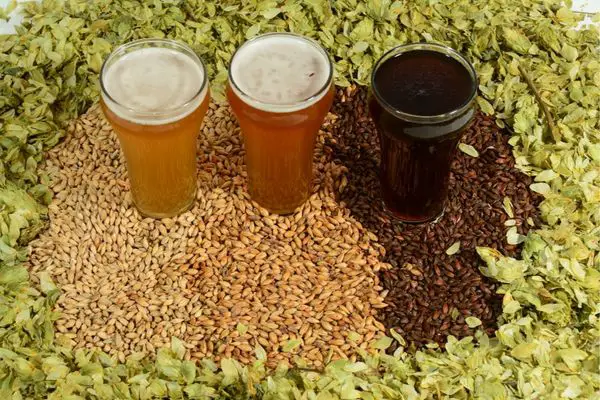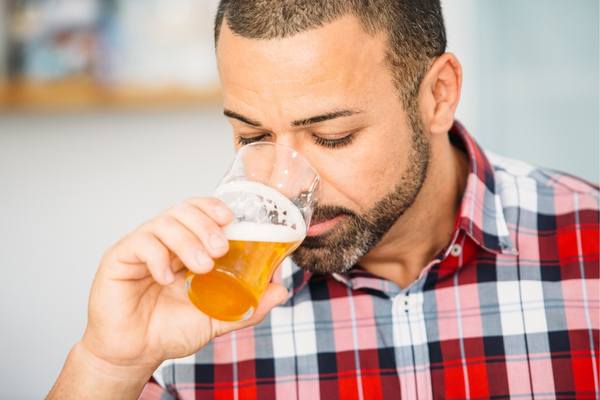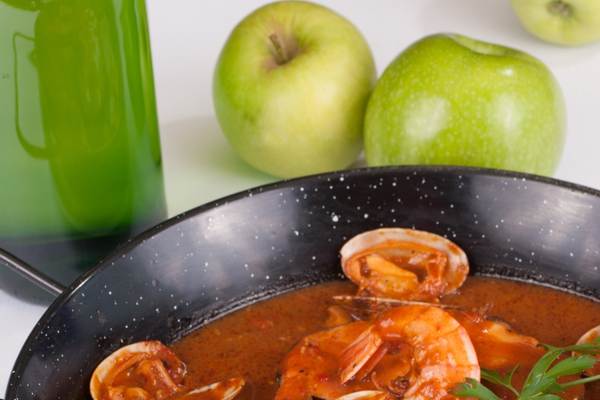Welcome to the fascinating world of beer, where two popular styles, India Pale Ales (IPAs) and Pilsners, often steal the spotlight.
IPAs (India Pale Ales) and Pilsner beers are two different styles of beer with distinct characteristics.
IPAs are a type of ale that is characterized by a strong hoppy flavor and aroma. They are usually brewed with a higher amount of hops, which gives them a bitter taste and a fruity or floral aroma. IPAs can range from light to dark in color and have a higher alcohol content than Pilsners.
On the other hand, Pilsner beers are a type of lager that originated in the Czech Republic. They are known for their light and crisp taste, with a subtle hop flavor and a clean finish. Pilsners are brewed with a specific type of yeast that ferments at a lower temperature, resulting in a more delicate flavor profile. They are usually light in color and have a lower alcohol content than IPAs.
In summary, IPAs are hoppy ales with a bitter taste and higher alcohol content, while Pilsner beers are light lagers with a crisp taste and lower alcohol content.
With distinct flavors and rich histories, both IPAs and Pilsners have earned their place as fan favorites among beer enthusiasts.
Understanding IPAs And Pilsners
IPAs and Pilsners each have their unique ingredients, brewing process, flavor profile, aroma, color, and alcohol content that make them stand out among other beer styles.
Ingredients And Brewing Process
The ingredients and brewing process of IPAs and Pilsners set the stage for their distinct flavors, aromas, and colors. Both beer styles rely on four foundational components: water, malted grains (typically barley), hops, and yeast.

In an IPA’s brewing process – which falls under the ale category – fruity, citrusy or floral hops take center stage. These intensely flavored hops are added at numerous stages throughout the boiling phase to generate a bold bitterness as well as their signature aroma profiles.
Brewers often use specific varieties like Cascade or Citra when creating IPAs to bring out desired herbal or fruity notes.
On the other hand, Pilsners belong to the lager family and feature a distinctly different brewing method focused on accentuating malt flavor rather than hop intensity.
The fermentation temperature for Pilsners is lower compared to ales; this cooler environment allows bottom-fermenting yeasts commonly used in lagers to work more slowly and produce fewer esters resulting in a cleaner taste profile with subtle hop presence.
Flavor Profile And Aroma
IPAs are known for their bold and bitter flavors, thanks to their high hops content. They have distinct herbaceous, fruity, and citrusy notes that leave a lasting aftertaste on the palate.

In contrast, Pilsners are more subtle in flavor, with a clean and crisp taste profile that appeals to those who prefer lighter beers. Their aroma is often characterized by floral or earthy scents, depending on the type of hops used during brewing.
Both beer types offer unique sensory experiences that appeal to different drinkers’ preferences. For those who crave complexity and intensity in their brews, IPAs may be the way to go.
Color And Appearance
IPAs and Pilsners have distinct differences in color and appearance. IPAs are typically amber to copper-colored with a hazy or cloudy appearance, while Pilsners are straw-colored with a clear and sparkling appearance.

The darker color of IPAs is due to the use of caramel malt during the brewing process, which gives it its characteristic sweetness. In contrast, Pilsners use lighter malts that add little to no flavor but contribute to their light color.
Additionally, IPAs tend to have a frothy head that lingers longer than that of Pilsners due to higher carbonation levels.
Alcohol Content
IPAs and Pilsners differ in their alcohol content. IPAs generally have a higher alcohol by volume (ABV) than Pilsners. The average ABV for an IPA is typically around 6-7%, but can reach up to 9% for double or imperial IPAs.
On the other hand, Pilsners usually have a lower ABV, with an average range of 4-5%. This makes Pilsners a great choice for those who prefer a lighter beer that won’t leave them feeling too intoxicated after one or two drinks.
Differences Between IPAs And Pilsners
IPAs are known for their bitter taste and high hop usage, while Pilsners feature a crisp malt flavor and lower bitterness; curious to know more about these differences? Keep reading!
Hops Usage And Bitterness
IPAs and Pilsners have distinct differences in their hop usage and bitterness levels. Hops are added during the brewing process to add flavor, aroma, and bittering to beer.
IPAs typically use a lot of hops, which gives them their characteristic strong bitterness. The hop varieties used in IPAs can vary widely from herbal to fruity or citrusy flavors.
On the other hand, Pilsners often have low or moderate hop levels resulting in a smoother taste with less bitterness compared to an IPA.
One interesting fact is that Double IPAs (DIPAs) and Imperial IPAs (IIPAs) have even more significant amounts of hops than standard India Pale Ales! This results in a very high IBU (International Bitterness Units) level making these beers noticeably more intense in terms of their bitterness than both regular IPAS and Pilsner styles.
Fermentation Process
The fermentation process plays a crucial role in the taste and alcohol content of both IPAs and Pilsners. Fermentation is the process where yeast consumes sugar from malted grains, producing carbon dioxide and ethyl alcohol in return.
In general, Pilsners undergo a lower temperature fermentation than IPAs, resulting in a smoother taste profile with more pronounced malt flavors.
On the other hand, IPAs can have varying degrees of fermentation depending on their style – Double or Imperial IPAs may have higher alcohol content due to prolonged fermentation periods.
Serving Temperature
Serving temperature is an important factor when it comes to enjoying IPAs and Pilsners. Generally, IPAs are served at a slightly warmer temperature than lagers or pilsners.
This is because the bitterness from the hops can be more pronounced at colder temperatures in IPAs. On average, IPAs are best enjoyed at around 50-55°F, while Pilsners should be served between 40-45°F to bring out their crispness and refreshing qualities.
However, ultimately serving temperature is down to personal preference – some beer enthusiasts even enjoy serving their IPA ice-cold.
It’s also notable that glassware can play a role in serving temperature as well – smaller glasses like snifters or tulips will warm up quicker due to their shape and size compared to larger pint glasses or steins which keep beers colder longer.
Similarities Between IPAs And Pilsners
Both IPAs and Pilsners share similarities in regards to carbonation levels, food pairings, and glassware – but there’s more to explore! Keep reading to discover the surprising overlap between these two popular beer styles.
Carbonation Levels
Both IPAs and Pilsners have similar carbonation levels at around 2 to 3 volumes of CO2. They are typically highly carbonated, providing a refreshing and crisp mouthfeel that enhances the overall drinking experience.

The bubbles in these beers also help to release their aromas, adding depth to their distinct flavors. However, the level of carbonation may vary based on the specific brand or brewery.
Some breweries prefer a lower level of carbon dioxide in their beer to create a creamier and smoother mouthfeel while others opt for higher levels for a more effervescent experience.
For example, Sierra Nevada’s Pale Ale has moderate-to-high carbonation levels, while Miller Lite Lager is known for having less noticeable bubbles compared to other mass-produced lagers.
Food Pairings
When it comes to food pairings, IPAs and Pilsners have their own unique characteristics that can complement different flavors. Here are some suggestions:
For IPAs:
– Spicy foods like Indian or Mexican cuisine
– Bold, flavorful meats like steak, burgers, or barbecue
– Rich, creamy cheeses like blue cheese or sharp cheddar
For Pilsners:
– Lighter fare like salads or seafood
– Fried foods like fish and chips or chicken wings
– Mild, nutty cheeses like Gouda or Swiss
It’s important to note that personal taste preferences also play a role in beer and food pairings.

Experiment with different combinations to find what works best for you.
Glassware
The type of glassware you use for your beer can also affect the overall taste and experience. For IPAs, a tulip or pint glass is best because it allows for more aroma to be released while drinking.
Pilsners, on the other hand, are typically served in tall slender glasses called pilsner glasses. These help maintain carbonation and showcase the beer’s clarity and color.
It’s important to note that using proper glassware isn’t just about aesthetics; it actually enhances the characteristics of each specific beer style.
Choosing The Right Beer For You
When it comes to choosing the right beer for you, personal preference is key – whether it’s a hoppy IPA or a crisp Pilsner.
Personal Taste Preferences
When it comes to choosing between IPAs and Pilsners, personal taste preferences play a significant role. India Pale Ales are known for their bitterness and complexity, with hoppy notes ranging from herbal to fruity or citrusy.
On the other hand, Pilsners have a generally milder flavor profile, with a more pronounced malt character and less hops presence.
Ultimately, choosing the right type of beer comes down to what you like best. For instance, if you’re in the mood for something light and easy-drinking on a hot summer day at a barbecue party or outdoor gathering then Pilsners may fit your bill perfectly well.
Occasion And Season
Choosing the right beer can enhance your experience, whether you’re relaxing after a long day or celebrating with friends. When it comes to IPAs and Pilsners, the occasion and season may play a role in which one you choose.
Light-bodied Pilsners are perfect for summertime events like barbecues or picnics since they pair well with lighter foods such as salads or grilled chicken. On the other hand, IPAs are an excellent choice for colder months like fall and winter when heartier food is on the menu.
Another factor to consider is personal taste preference. If you appreciate bitterness and hop flavor, then an IPA would be ideal any time of year. Conversely, if you prefer a more balanced profile between malt sweetness and crispness from carbonation, then a Pilsner should suit your palate better regardless of the season.
Examples Of Popular IPAs And Pilsners
Here are some popular examples of IPAs and Pilsners:
IPAs:
1. Dogfish Head 60 Minute IPA
2. Lagunitas IPA
3. Sierra Nevada Torpedo Extra IPA
4. Stone Brewing’s Arrogant Bastard Ale
5. Bell’s Hopslam Ale
Pilsners:
1. Pilsner Urquell
2. Miller Lite
3. Budweiser Budvar Original Lager
4. Stella Artois
5. Bitburger Premium Pils
Whether you prefer a hoppy and bitter IPA or a crisp and refreshing Pilsner, there are plenty of options to choose from in the craft beer world!
Final Verdict: Pilsners VS IPAs
After examining the flavor profile, aroma, bitterness, and other factors that differentiate IPAs from Pilsners, it’s clear that there is no clear winner – it ultimately depends on your personal preferences.
However, by understanding these differences and similarities between the two beer styles, you can make an informed decision on which to try next time you’re out at a brewery or bar.
Overall Taste, Aroma, And Flavor
When it comes to the overall taste, aroma, and flavor of IPAs versus Pilsners, there are distinct differences that set them apart. IPAs are known for having a strong hop presence with herbal, fruity or citrus notes that provide a bitter finish.
This bitterness is balanced by the malt flavors present in the beer. On the other hand, Pilsners have a more subtle hop profile and rely heavily on crisp malt flavors with no lingering bitterness.
In terms of aromas, IPAs tend to have complex scents featuring both floral and fruity notes from hops blending together along with underlying caramel-like sweetness; whereas Pilsners typically offer mild grainy or sweet bread aromas coupled with some spicy noble hop character coming through.
Popular Opinion And Preference
When it comes to the popular opinion and preference between IPAs and Pilsners, it ultimately boils down to personal taste. Some beer enthusiasts enjoy the bold, hop-forward flavors of an IPA while others prefer the crisp, clean taste of a Pilsner.
According to recent data from Brewbound, India pale ale accounts for over 29% of all craft beer sold in America. This is due in part to their distinct flavor profile that can range from herbal and fruity to citrusy and piney.
In contrast, Pilsners have seen a resurgence in popularity recently but still make up less than 5% of total craft beer sales.
FAQs:
1. What is the main difference in taste between IPAs and Pilsners?
The main difference between IPAs and Pilsners lies in their brewing process and ingredients. While IPAs are brewed with a high amount of hops, giving them a more bitter taste, Pilsners are brewed with lighter malts and have a crisper flavor.
2. Which beer pairs better with certain foods?
IPAs pair well with spicy or bold-flavored foods such as pizza, burgers or Mexican food whereas Pilsners complement lighter dishes like fish tacos or salads.
3. Are there any similarities between IPAs and Pilsners?
Yes! Both types of beers are carbonated by adding carbon dioxide during the brewing process which gives them that refreshing fizz we’ve all come to love.
4. Is one type of beer healthier than the other?
Both IPA’s & pilsners contain roughly the same amount of calories per serving size but given higher ABV in most IPA’s it takes fewer glasses for same level intoxication; thus they may not be suitable for people on strict diets & health regimes aiming to cut down alcohol intake significantly over time while still enjoying alcoholic beverages occasionally – it is best to drink both types responsibly in moderation.
Conclusion
In conclusion, both IPAs and Pilsners have unique characteristics that make them stand out in the beer world. India Pale Ales are known for their hoppy bitterness, while Pilsners offer a more balanced taste with a crisp finish.
For those who enjoy bold and complex flavors, IPAs may be the way to go. However, if you prefer a milder taste with subtle hops and malt notes, then Pilsner is worth trying.
Overall, both styles have their own appeal and can be enjoyed by different drinkers based on their beer journey so far.
Sources:
https://www.huffpost.com/entry/beer-styles-for-dummies_n_59831692e4b06d48887468d9
https://time.com/5218581/types-of-beer-guide/
https://www.masterclass.com/articles/pilsner-vs-lager
https://www.businessinsider.com/different-types-of-beer-explained-2018-6




